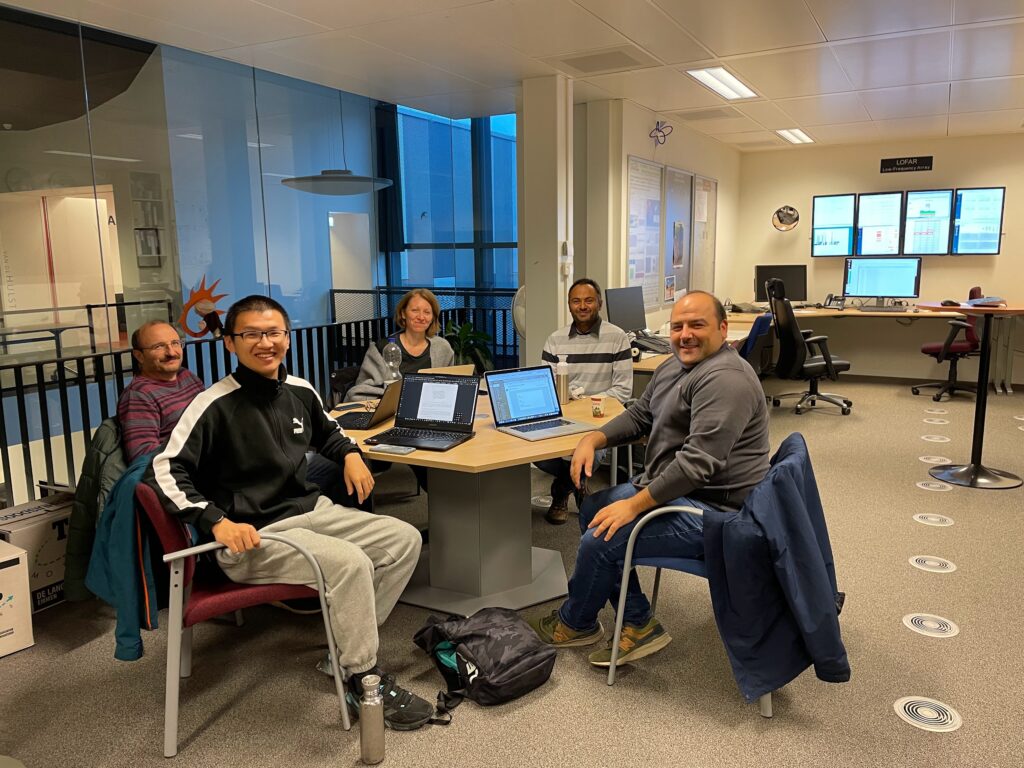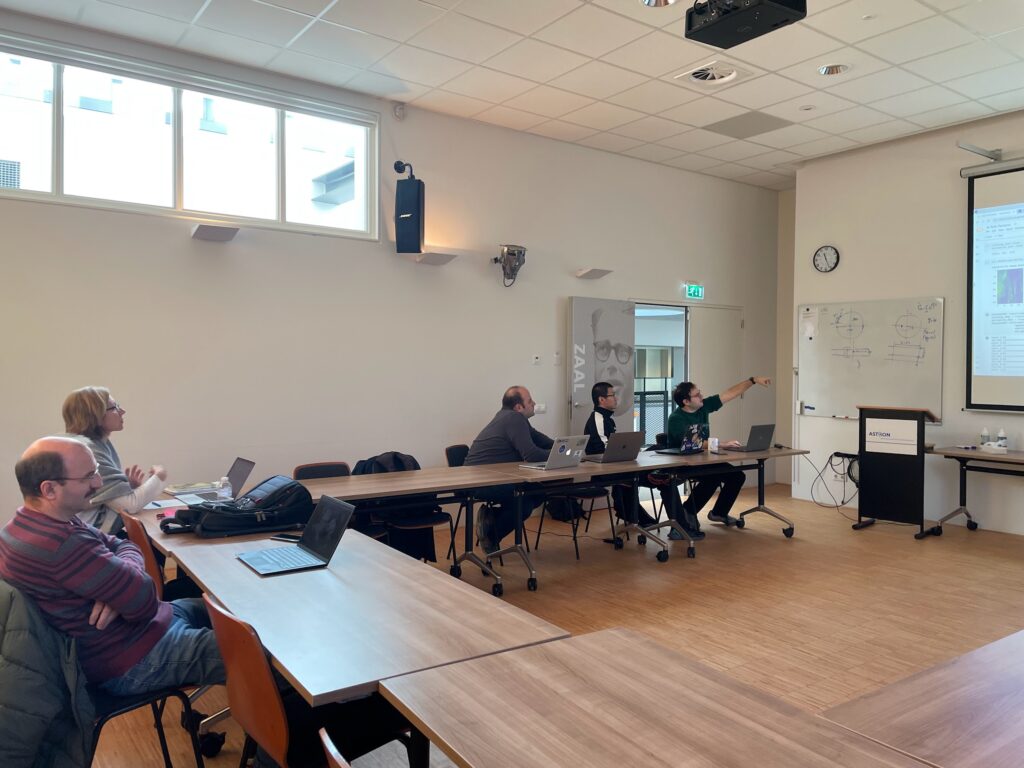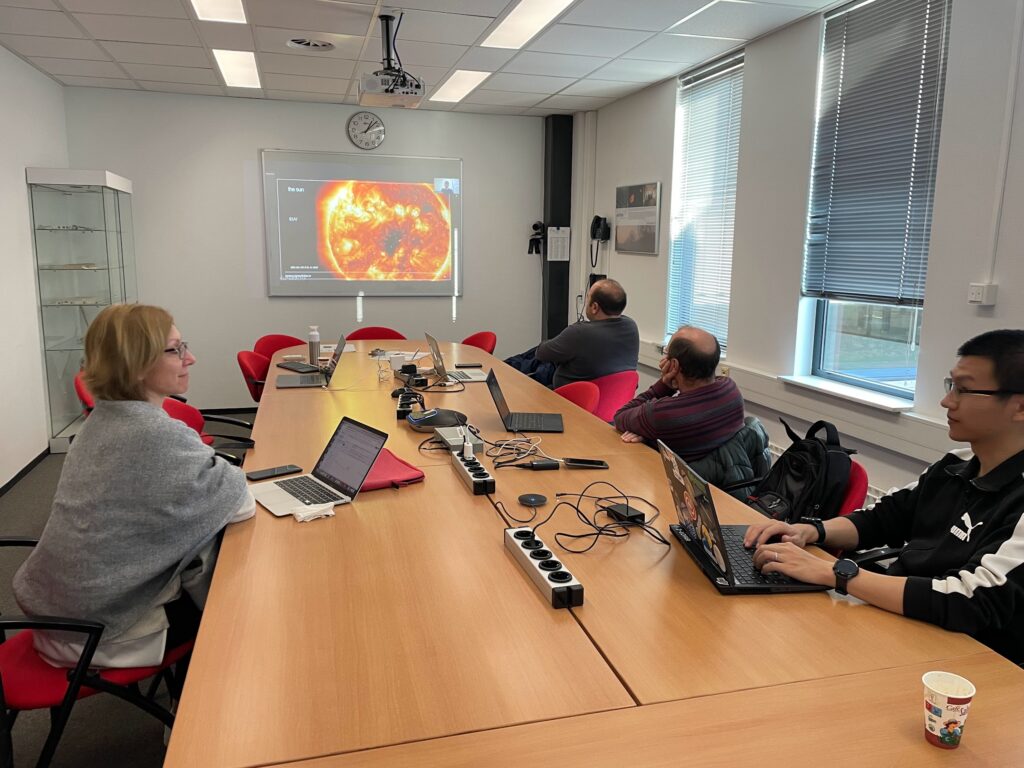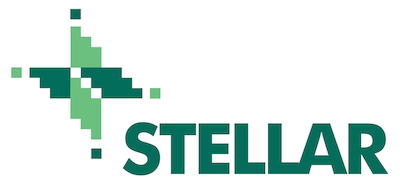The aim of the staff visits was to produce scientific publications in high ranked journals on solar and SW related topics. The activities consisted of a series of collaborative visits of Bulgarian scientists to ASTRON culminating with the current task that took place in month 27 (originally 26) focused on analyzing the LOFAR datasets with the techniques learned in WP3-T3 and WP4-T3 and with the use of complementary ground-based and space-based observations produce solar and SW scientific studies to be published in high ranked journals.
During the week multiple topics were treated and the team worked on a series of tasks. These may be summarized with five main topics, (1) the production of preliminary datasets for an outstanding LOFAR observation of a Type II shock signature from the solar corona. The preliminary scientific results are shown in Figure 1. (2) Discussions on a STELLAR collaboration (R. Miteva and M. Mevius) to determine the effects on the ionosphere of large solar flares. (3) Preparation and discussions on the summer schools to be hosted in Bulgaria by the IANAO and TUS team. (4) Solar and Space Weather KSP meeting. (5) Radio data for deep learning discussion and collaborations (M. Mancini).
During the meeting a promising study of the interaction between solar flares and the ionosphere as measured in the LOFAR spectrum was also initiated. The meeting served also as a platform for discussion and planning on the LOFAR-BG station to be built in Bulgaria. The KSP meeting was also hosted in the presence of the Bulgarian colleagues at ASTRON. Finally, training and collaboration on the usage of AI and machine learning techniques for radio datasets was also possible during the same visiting week.



